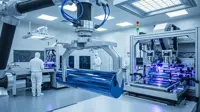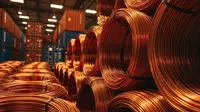Scientists discover key to Christmas Island’s red crab migration
03 Sep 2010
One of the most spectacular migrations on Earth is that of the Christmas Island red crab (Gecarcoidea natalis). Acknowledged as one of the wonders of the natural world, every year millions of the crabs simultaneously embark on a five-kilometre breeding migration. Now, scientists have discovered the key to their remarkable athletic feat.
A three-year project conducted by a team led by the late Professor Steve Morris from the University of Bristol's School of Biological Sciences in collaboration with Professor Simon Webster from Bangor University, has discovered that hormonal changes play a significant role in enabling the crabs to make their journey.
Lucy Turner, a researcher at the University of Bristol, said: ''During the wet season on the island, in November or December, and prompted by the arrival of the monsoon rains, millions of the crabs undertake an arduous breeding migration from their home on the high rainforest plateau to the ocean to reproduce. This is a journey of several kilometres - a long way when you are a relatively small land crab (less than 20cm long).
''Scientists have long been puzzled by what mechanisms enable the necessary changes to take place in the crabs' physiology to allow this journey to take place, and how they make such a dramatic switch from hypoactivity to hyperactivity.''
The results of this project have proven that it is a Crustacean Hyperglycaemic Hormone (CHH) that enables the crabs to make the most efficient use of their stored energy in the muscles (glycogen) and its conversion to glucose to fuel the migration.
Professor Webster, an endocrinologist at Bangor University, added: "Their migration is extremely energetically demanding, since the crabs must walk several kilometres over a few days. During the non-migratory period, the crabs are relatively inactive and stay in their burrows on the floor of the rain forest, only emerging for a brief period at dawn, to feed. The behaviour change reflects a fundamental change in the metabolic status of the animal.






















